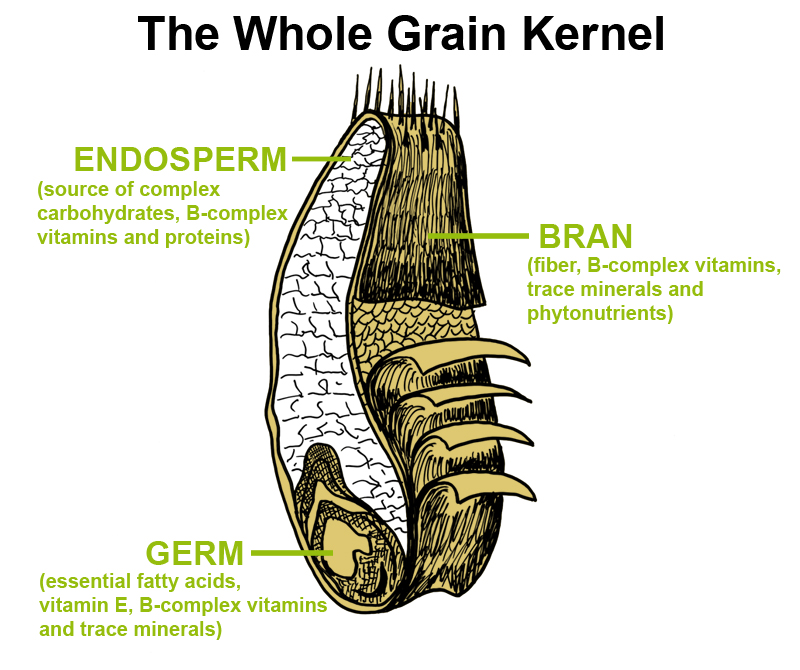The food industry is constantly changing - companies are always pushing lower fat, healthier foods. No Trans Fat! Whole Grains! Low Sodium! are headlines that jump out at us from the label. Interestingly enough, eating a diet rich with whole grains is something that can drastically improve both the quality and length of your life. I've answered some FAQ'S about wholegrains below - I hope they help you enrich your diet!
What is a whole grain? A whole grain is one that includes all three parts of the grain: the germ, endosperm and bran. A wholegrain will sprout in the right conditions whereas a refined grain will not. Some very common whole grains are: wheat, oat, barley, brown rice, maize and rye. Some refined grain products are: white rice, white flour and hominy.
How can I determine if a product is wholegrain or not? Good question. Look at the ingredient list - "wholewheat," "wholemeal," or "whole corn" as the first ingredient, the product is a wholegrain food item. However, if the whole grain product isn't listed until 2nd, that may indicate that the product is between 1-49% wholegrain.
Why should I eat whole grain products? Because they're very good for you! Consumption of whole grains is consistently linked with a significant decrease in risk factors for cardiovascular disease. They are also high in fiber which contributes to intestinal function and health. Regular wholegrain consumption lowers LDL and triglyceride levels, which contributes to an overall 26% reduction in coronary heart disease risk factors. Additionally, wholegrain consumption is inversely related to diabetes and obesity. In short, they help you manage your weight and lower your risk of heart disease.
A lot of people have told me that wholegrain products don't taste as good - I think it's just a matter of trying and buying a variety of products. And, you don't have to eat all wholegrains all the time - 3 servings of wholegrains per day will yield the previously mentioned health attributes. Barilla has done a great job of developing whole grain pastas that taste delicious. If you prefer white bread over wheat (like myself), there are breads that look and taste like white bread and have the same nutritional benefits as regular whole-wheat or whole-grain bread. White whole-wheat bread is made with an albino variety of wheat, which is lighter in color and has a sweeter, milder flavor (Sara Lee has a variety of this).
It's very simple to incorporate whole grains into your diet. Cook with brown rice instead of white. Cheerios instead of Frosted Flakes. Whole wheat bread instead of white enriched bread. Pair a whole grain rice with a serving of delicious nutritious BEEF (loaded with zinc, iron and protein) and you've got a powerhouse meal! For more information on whole grains visit the Whole Grain Guide.
Until next time,
~Buzzard~




No comments:
Post a Comment